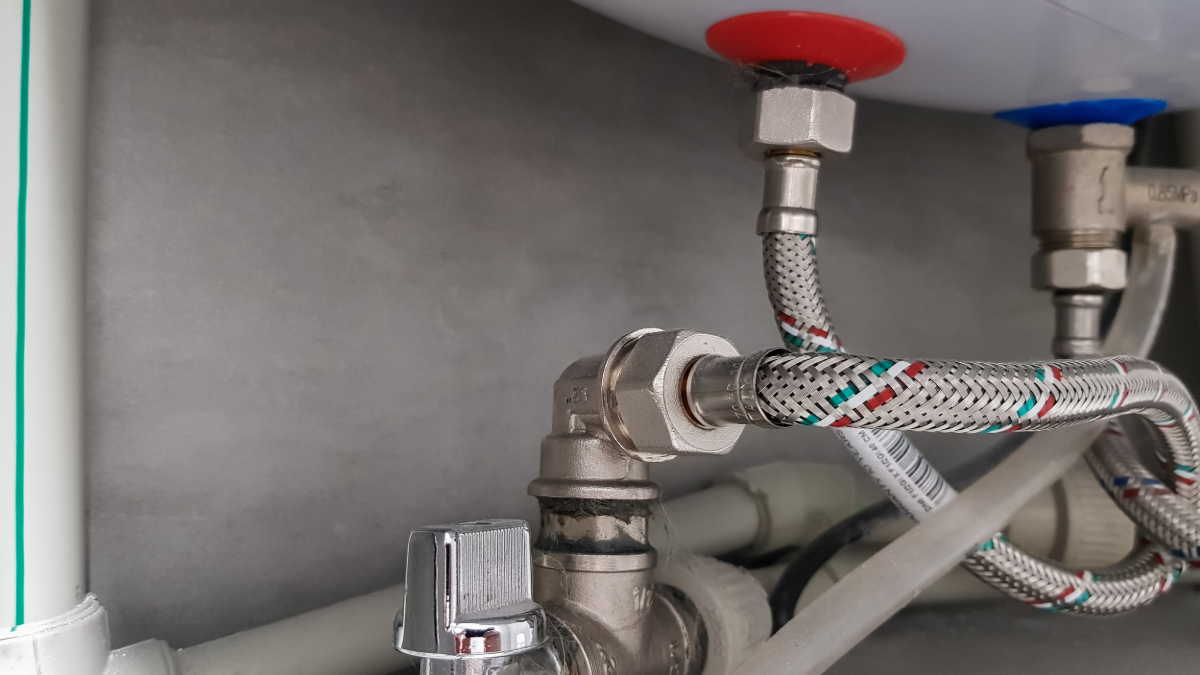Useful Tips for Dealing with Plumbing Issues in Older Homes
Useful Tips for Dealing with Plumbing Issues in Older Homes
Blog Article
We've stumbled on this article relating to Plumbing Issues in Older Properties and How to Fix Them directly below on the net and accepted it made perfect sense to share it with you here.

Older homes typically come with beauty, character, and background, but they can additionally bring a host of plumbing problems. Whether you're dealing with maturing pipes, low tide pressure, or leakages, knowing exactly how to resolve these usual problems is vital to maintaining a risk-free and useful home. In this guide, we'll check out the typical pipes difficulties encountered by older homes and offer sensible services to maintain your pipes in top shape.
Comprehending Usual Plumbing Issues
Aging Pipelines
Among one of the most typical problems in older homes is maturing pipelines. Depending on the age in which your home was constructed, the pipelines could be made from materials that have worn away over time, such as galvanized steel, cast iron, and even lead. These products can wear away, end up being weak, or develop leaks, bring about water damage and potential health hazards.
Water Quality Testing
Older pipelines can influence the quality of your water. Conduct a water top quality test to look for contaminants such as lead, rust, or other impurities that might be presented by maturing pipes.
Solutions for Usual Plumbing Problems
Changing Aging Pipelines
If your home has old, deteriorating pipelines, take into consideration replacing them with contemporary products like copper or PEX. This can be a substantial investment, yet it will certainly prevent future problems and enhance the safety and security and integrity of your plumbing system.
Taking Care Of Low Tide Stress
To fix low water pressure, begin by cleansing or changing old fixtures and removing mineral buildup in the pipes. If the problem persists, it might be necessary to replace sections of corroded pipes.
Repairing and Replacing Dripping Pipelines
For tiny leaks, you can use pipe clamps or epoxy putty as a temporary solution. Nonetheless, it's ideal to change leaking pipelines totally to stay clear of further damage.
Upgrading Components
Upgrading old fixtures to contemporary, water-efficient versions can enhance your home's plumbing performance and reduce water usage. Search for fixtures with the WaterSense tag for the very best effectiveness.
Handling Pipe Corrosion
If your pipes are corroded, changing them with corrosion-resistant products like copper, PVC, or PEX is the very best solution. Normal examinations and water quality upkeep can assist avoid better corrosion.
Low Tide Stress
If you're experiencing low water pressure, it could be due to natural resources, deterioration inside the pipes, or old fixtures that are no longer functioning successfully. This can be a significant inconvenience, specifically in areas like showers and sinks.
Dripping Pipelines
Leakages are one more frequent issue in older homes, commonly triggered by corroded or damaged pipes. Even tiny leaks can lead to significant water damages, mold and mildew development, and enhanced water costs otherwise dealt with promptly.
Obsolete Fixtures
Outdated pipes fixtures such as faucets, toilets, and showerheads not just look old but might likewise be much less effective, prone to leakages, or incompatible with modern pipes standards.
Pipe Corrosion
Deterioration is a typical issue in older pipes, particularly those made from galvanized steel or actors iron. Rusty pipes can limit water flow, create discoloration, and at some point result in leakages or pipeline ruptureds.
Evaluating the Problem of Your Plumbing
Evaluating Visible Pipelines
Start by evaluating any type of visible pipelines in your home, such as those in cellars, crawl spaces, or under sinks. Try to find signs of corrosion, leaks, or corrosion, which can indicate underlying problems.
Looking for Leaks
Check for leakages by examining locations around faucets, commodes, and under sinks. You can also monitor your water meter prior to and after a duration of no water use to detect concealed leakages.
When to Call a Professional
While some plumbing concerns can be handled with DIY solutions, there are times when it's best to employ a professional. If you're handling significant leakages, extensive rust, or are unsure about the condition of your pipelines, a qualified plumbing can supply experienced assessment and repair service.
Preventive Upkeep Tips
Normal Inspections
Frequently check your pipes system for indicators of wear and tear. Catching problems early can avoid expensive repair services down the line.
Water Stress Law
Guarantee your water pressure is within the recommended variety to avoid emphasizing your pipes and fixtures. A plumbing professional can mount a pressure regulator if needed.
Water Quality Maintenance
Set up water filters or conditioners if your water top quality is poor. This can shield your pipelines and components from damage brought on by difficult water or impurities.
Positive Pipeline Substitute
If your home has very old pipelines, take into consideration proactive replacement before significant concerns emerge. This can conserve you from emergency situation repair work and water damages.
Final thought
Taking care of plumbing issues in older homes calls for a mix of caution, precautionary maintenance, and timely upgrades. By understanding the usual obstacles and recognizing when to seek expert assistance, you can ensure your pipes system stays practical and reputable for years to find.
Common Plumbing Issues in Older Homes and How to Fix Them
Owning an older home in Australia comes with its unique charm and a set of challenges, especially when it comes to plumbing. The Sunshine Coast has many older properties that can harbour plumbing problems that aren t just inconvenient but potentially costly. Here s a look at some common plumbing issues in older homes and expert advice on how to handle them.
Outdated Piping Materials
Many older homes were built with galvanised steel, cast iron, or even lead pipes, materials that are far from ideal by today s standards. Galvanised pipes are prone to corrosion and clogging, while lead pipes pose serious health risks.
How to Fix:
Replacing old pipes is a job for a professional. Upgrading to copper or PVC piping not only enhances water quality and flow but also increases the property s safety and value. If you suspect your home has outdated materials, a licensed plumber can conduct a thorough inspection and recommend the best course of action.
Corrosion and Pipe Degradation
Over time, exposure to water and minerals can cause pipes to corrode, leading to leaks, bursts, and water contamination. Corrosion is especially common in homes over 50 years old.
How to Fix:
Regular inspections can catch early signs of corrosion. If corrosion is found, the affected section of piping often needs to be replaced. For homes with extensive corrosion, a complete plumbing overhaul might be necessary. It s crucial to consult with a plumbing expert to understand the extent of the issue.
Tree Root Intrusion
Older neighbourhoods usually have mature trees whose roots can intrude into pipe lines, causing blockages or damage. This is particularly problematic for sewer lines, where roots seek out water sources.
How to Fix:
A plumber can use a specialised camera to inspect sewer lines for root intrusion. If roots are a problem, methods like root cutting or hydro-jetting can clear the obstruction. In severe cases, part of the pipe may need replacing. Consider root barriers around the piping to prevent future issues.
Inadequate Water Pressure
Low water pressure in older homes can be due to various factors, including corroded water lines, sediment build-up in pipes, or outdated fixtures.
How to Fix:
First, check if the low pressure is isolated to one area or throughout the house. Replacing old fixtures can sometimes resolve the issue. However, if the problem is more widespread, it might be due to sediment or corrosion. Flushing the system or replacing the affected pipes usually restores normal pressure. Again, a professional assessment is advisable.
Outdated Fixtures
Older homes often feature fixtures that are not only visually dated but functionally inefficient. This includes everything from toilets and taps to showerheads and washing machine hoses.
How to Fix:
Updating these fixtures can improve both water efficiency and the aesthetic appeal of your home. Modern fixtures are designed to conserve water, which can significantly reduce your water bill and lessen your environmental impact.
Conclusion
Maintaining the plumbing in an older home requires a proactive approach. Regular checks and updates are key to preserving these beautiful properties. If you re facing plumbing issues in your older home, it s best to call on experienced professionals like Green & Gold Plumbing & Gas. With the right expertise, even the most daunting plumbing problems can be resolved, ensuring that your home s character is maintained while its functionality is enhanced.
https://gandgplumbing.com.au/common-plumbing-issues-in-older-homes-and-how-to-fix-them/

Do you appreciate more info about ? Leave feedback down below. We would be glad to see your thoughts about this blog. We hope to see you back again soon. Appreciated our article? Please quickly share it. Let other people find it. Thank-you for going through it.
Book Your Installation Report this page